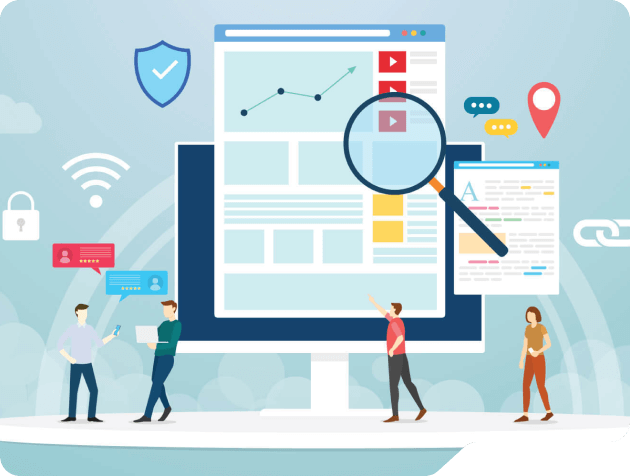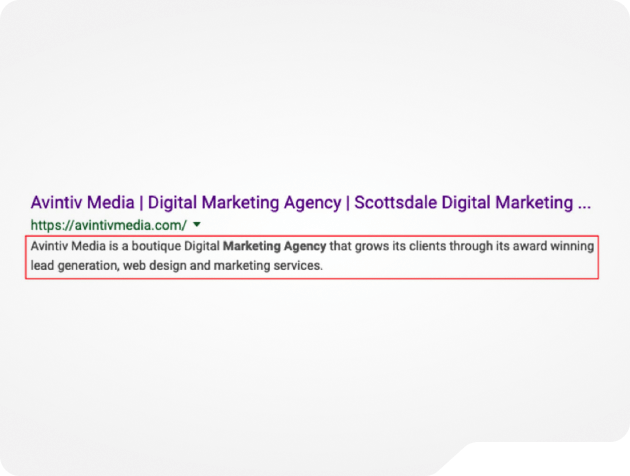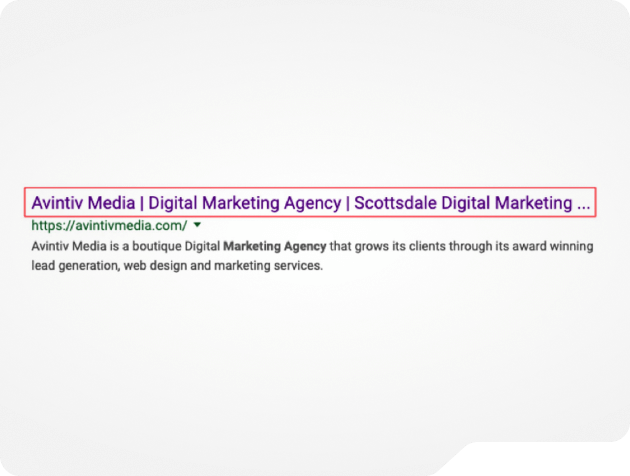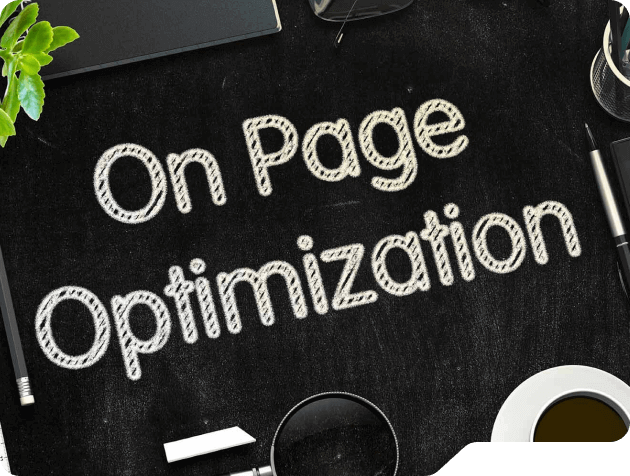The digital landscape that we know today is a battlefield. Every business and entrepreneur is locked in a relentless struggle for attention. With many websites competing for the same audience, the key to success lies in searchability.
On-page SEO goes beyond creating great content; it’s about meticulously crafting your website to resonate not only with your audience but with search engines as well. By implementing strategic optimization techniques, you can inform search engines precisely about your content and explain why it deserves a prime spot. The result? A surge in organic traffic – the lifeblood of any website.
This article is your ultimate on-page SEO checklist. We’ll break down the essential steps to optimize your content and pages and transform your website into a search engine magnet for digital success.
-
Conduct Thorough Keyword Research
Millions of conversations happen online daily, with people actively searching for information. Keyword research, the bread and butter of any effective SEO strategy, unlocks the potential to reach this vast audience. It involves discovering the exact words and phrases your target audience uses to search for information online.
When conducting keyword research, consider your ideal customers’ questions or the information they desperately seek. Keyword research helps you answer these questions by revealing the specific search queries your target audience uses. By understanding their search intent, you can craft content that directly addresses their needs and enhances your website’s relevance in their eyes.
Utilize a combination of tools and analyze the search volume, competition level, and relevance to your target audience. Tools like SEMRush or Google Keyword Planner help you identify high-volume keywords with lower competition. It ensures your content cuts through the noise and ranks prominently for relevant search queries.
-
Craft Compelling Content
Having a solid keyword foundation is crucial, but the quality of your content truly captivates your audience and search engines alike. Here’s how to craft content that excels:
Informative and Engaging Content
Prioritize creating informative, engaging content that genuinely addresses your target audience’s needs and interests. Focus on providing valuable insights, answering their questions comprehensively, and solving their problems. Refrain from regurgitating information readily available elsewhere. Conduct thorough research, inject your unique perspective, and strive to be the go-to source for your audience’s specific needs.
Target Keywords Naturally
Remember those valuable keywords you identified in Step 1? Now, it’s time to integrate them seamlessly into your content. Strive for a natural flow that prioritizes user experience rather than forcing the keywords. Integrate your target keywords naturally and relevantly throughout your content but be mindful not to overuse them. Include them in your title tag, headings (H1, H2, H3), meta description, and organically throughout the body text.
LSI Keywords for Context
LSI (Latent Semantic Indexing) keywords are semantically related terms that contextualize your content. They are synonyms or related concepts that further explain your main topic. Including LSI keywords demonstrates to search engines that your content comprehensively covers a subject. For instance, if your target keyword is “social media marketing tips,” relevant LSI keywords could be “engagement strategies for Instagram,” “content marketing for Facebook,” or “measuring social media ROI.”
-
Write Enticing Titles & Descriptions
Crafting engaging titles and meta descriptions is essential for on-page SEO. These elements act as your content’s digital storefront, enticing users to click while simultaneously communicating value to search engines.
Compelling Titles
Strive for clear, concise meta titles (50-60 characters) that incorporate your target keyword naturally. Don’t sacrifice clarity, but prioritize keywords and intrigue. Instead of a bland title like “Social Media Marketing Tips,” consider “Unveiling Powerful Social Media Marketing Strategies to Boost Engagement.” This title communicates the value proposition (increased engagement) and uses strong verbs to pique reader interest.
Optimized Meta Descriptions
Write clear and concise meta descriptions highlighting your content’s value. Focus on user benefits and incorporate a call to action (CTA) to encourage clicks. Weave your target keyword naturally and prioritize a natural reading flow. A compelling meta description may be, “Discover proven social media marketing strategies to skyrocket engagement by 20% and cultivate a thriving audience. Click to learn more!” Highlighting the benefit of a “20% increase in engagement” grabs attention and emphasizes the value users will gain.
Target Keywords
Include your target keyword strategically in both titles and descriptions for optimal relevance. Consider incorporating LSI keywords for additional context, but prioritize a natural flow to avoid keyword stuffing. While including your main keyword is crucial, consider incorporating long-tail keywords (more specific phrases) within your titles and descriptions. It can attract users with more defined search queries and demonstrate content relevance.
-
Structure for Readability & SEO
A well-structured website enhances user experience by effortlessly guiding readers through your content. It also assists search engines in comprehending your content effectively, boosting your SEO. Here’s how to optimize your content structure.
Headings (H1, H2, H3)
Think of your headings like a roadmap that helps users navigate your content. Use clear and concise headings (H1, H2, H3) to create a hierarchy that breaks down your content into easily digestible sections. The H1 tag is your main title, acting as your piece’s prominent billboard. H2 tags function as subheadings for critical sections, and H3 tags provide further granularity within those sections.
When crafting headings, prioritize user-friendliness. Ensure they precisely reflect the content of each section at first glance. It improves readability and gives users a quick understanding of each section, allowing them to scan for specific information they might need.
-
Craft User-Friendly & SEO Optimized URLs
Website URLs function as unique identifiers for your content. Imagine them as digital labels attached to each webpage, guiding users and search engines to the specific information they seek. By crafting them strategically, you can enhance user experience and boost your SEO efforts.
Readability
Imagine users scanning search results – can they instantly grasp the content a webpage offers based solely on the URL? Strive for crystal-clear and concise terms that accurately reflect the page’s content. For instance, a URL slug with “marketing-tips-for-small-businesses” offers a clear understanding of the content compared to the generic “marketing-resources-7”. This user-centric approach fosters trust and encourages clicks, as visitors are confident they’re landing on the content they seek.
Structure for Search Engines
Search engines analyze your content and evaluate your website’s structure, including URLs. Including your target and relevant LSI keywords (related search terms) within your URLs can help search engines understand the content’s theme. It could improve your website’s ranking for relevant search queries. Remember to keep your URLs concise while maintaining clarity, as search engines favor shorter URLs.
-
Mobile-Friendliness
With a significant portion of traffic now coming from smartphones and tablets, a clunky mobile experience translates to high bounce rates and decreased engagement – both detrimental to SEO.
Responsive website design addresses this challenge. It ensures your website’s content and layout adjust effortlessly to any screen size, from desktops to smartphones. This seamless adaptability goes beyond aesthetics; it fosters a positive user experience by keeping visitors engaged with your content.
However, the benefits go beyond user experience. Search engines generally consider mobile-friendly websites more user-friendly and trustworthy, potentially leading to higher search results rankings. A website’s mobile-friendly nature significantly influences user experience and engagement, making it a critical on-page SEO factor. By ensuring a flawless mobile experience, you improve both and position your website for tremendous SEO success.
-
Page Speed Optimization
Page speed is crucial for both enhancing user experience and boosting SEO performance. A fast-loading page keeps users engaged and reduces bounce rates, while search engines favor websites that load quickly.
To improve your page load time, start by minimizing HTTP requests. Each element on your page, like images, scripts, and CSS files, requires a separate HTTP request, and reducing the number of these elements can significantly enhance your page’s speed.
Another way to increase page load time is to enable compression to make your files smaller and quicker to download. It is especially beneficial for users with slower internet connections. Reduced file sizes lead to faster load times, which improves search engine rankings and enhances user experience.
-
Image Optimization
Images are a powerful way to enhance your content’s visual appeal and user experience. But large, unoptimized images can slow down your page load speed. Here’s how to optimize your images for both user experience and SEO:
Optimize Image File Names
Instead of generic file names like “IMG_0987.jpg,” use descriptive file names that incorporate your target keyword and accurately reflect the image content. For example, “social-media-marketing-strategy.jpg” is a much more informative file name.
Write Informative Alt Text
Alt text is essential for accessibility as it describes the content of an image to users who cannot see it, such as those with visual impairments or in cases where images do not load. Search engines also consider it when indexing your content. Write clear and concise alt text that describes the image accurately and includes your target keyword naturally.
Compress Image Sizes
Large image files can significantly slow down your website’s loading speed. Utilize image compression tools to reduce file sizes without sacrificing quality. It ensures your images load faster while maintaining a crisp visual appearance.
-
Internal Linking
Internal linking acts as your website’s web, strategically connecting your content to create a cohesive and informative user journey. It’s a win-win for both users and search engines.
Link Relevant Internal Pages
Imagine your website as a comprehensive encyclopedia. Internal linking allows you to seamlessly connect related articles and resources, guiding users on a path of discovery. For example, a blog post on “Social Media Marketing Tips for Beginners” could strategically link to a separate page detailing “Crafting Compelling Content for Social Media Engagement.”
Use Keyword-Rich Anchor Text
The text you click on within a hyperlink is called anchor text. When linking internally, prioritize clear and concise language enriched with relevant keywords that accurately reflect the linked page’s content. It can result in higher organic traffic and enhanced overall website performance.
-
Monitoring and Analyzing for SEO Success
On-page SEO requires continuous attention, not just a one-time adjustment. Consistent monitoring and analysis are essential to maintain your website’s ability to attract organic traffic and improve its search engine rankings over time.
Utilize website analytics tools like Google Search Console to track essential metrics like organic traffic, keyword rankings, and user behavior. These valuable insights offer a window into the effectiveness of your on-page SEO efforts. Are your target keywords attracting the right audience? Is your content keeping them engaged? Analyzing this data allows you to pinpoint areas for improvement and refine your SEO strategy for long-term success.
Taking Away the Challenge of On-Page with AVINTIV
We understand the power of on-page SEO in driving organic traffic. However, deciphering website analytics and translating data into actionable strategies can be challenging. With over 12 years of experience building and growing over 400+ brands through our award-winning SEO services, our team of SEO veterans at AVINTIV goes beyond the surface, uncovering hidden patterns and trends within your website’s data.
If you’re ready to unlock the true potential of your on-page SEO and achieve sustainable organic traffic growth, contact us today for a free consultation. Let’s discuss how our expertise can empower you to dominate the digital landscape!





